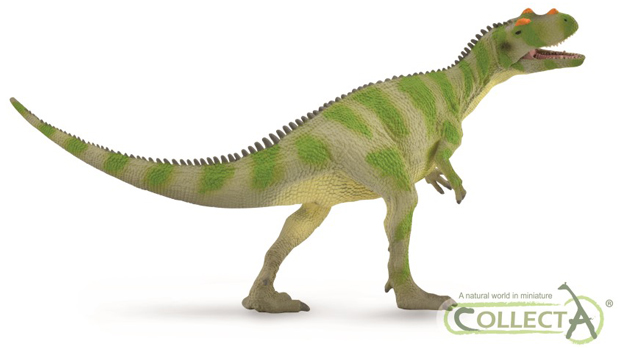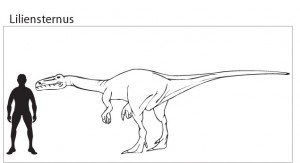Evidence of Huge Triassic Carnivore Found up a Swiss Mountain
Dinosaur footprints found in Switzerland indicate the presence of a large, carnivorous theropod dinosaur during the Triassic.
Switzerland might be more famous for cuckoo clocks and Swiss army knives but it is gaining a bit of a reputation as a hot spot for Triassic dinosaur remains. For example, back in 2007 the discovery of a huge bone bed of plateosaurs was announced by scientists from the University of Bonn. The site in question is regarded as the largest congregation of dinosaur bones ever found in Europe.
To read more about the bone bed: Huge Bone Bed found in Switzerland.
Dinosaur Footprints
A team of researchers from the Natural History Museum in Basel have found a set of three-toed dinosaur footprints, half-way up a mountain. The footprints, believed to be from a bipedal, theropod dinosaur are some of the largest footprints of their kind ever found in Europe. The tracks indicate that approximately 210 million years ago, this area of Europe was stalked by a large predatory dinosaur, perhaps more than 6 metres long. Evidence of such a large, carnivorous dinosaur from such ancient sediments has caused scientists to re-think the evolution of the theropod lineage, footprints of this size are known from the Early Jurassic but not from the Late Triassic. This indicates that large meat-eating dinosaurs evolved earlier than previously thought.
During the Triassic, Switzerland was part of a huge landmass in the Northern Hemisphere called Laurentia, this part of the world was a coastal plain and a number of important Mesozoic fossils have been found in the country, but never before has evidence of such a large meat-eating dinosaur been discovered. The footprints measure up to 40 cm long and indicate a very large carnivorous dinosaur, perhaps exceeding Liliensternus in size, a Late Triassic carnivore, a member of the Coelophysoidea whose fossils have been found in Germany and France.
Tracks Covering a Substantial Area
The footprints were found at approximately 3,300 metres on a mountain in Ela Nature Reserve. During the Late Triassic this part of the world had a tropical climate and it seems that the footprints were made when this dinosaur walked across a shallow area of salty water. The prints were fossilised and then over millions of years geological pressure forced the strata to buckle and fold forming the Alps. The prints are difficult to spot, they are only visible when direct sunlight does not shine on them, and to see them tourists will have to endure an eight hour hike. Hopefully, casts will be made and these will be put on display at a local museum and visitor centre.
Large Theropod Dinosaurs Lived During the Early Jurassic

CollectA Deluxe Saltriovenator dinosaur model. A very large theropod dinosaur was described from Lower Jurassic sediments, indicating that some meat-eating dinosaurs might have grown very large prior to the Jurassic.
The three-toed print can be just made out in the centre of the photographs shown in the media. As trackways have been discovered (a set of fossil footprints), the Swiss scientists hope to calculate how fast this dinosaur was moving. Other dinosaur footprints are known from this area but they are all herbivores, most likely prosauropods such as Plateosaurus.
A Large Coelophysid or a Primitive Ceratosaur?
It is impossible to state precisely what sort of theropod dinosaur made these footprints. It could be a very large coelophysid or perhaps a primitive ceratosaur. The fossil record for meat-eating dinosaurs of the Late Triassic is particularly poor.
If it was a crested meat-eater it may have resembled a Liliensternus, but at this time this is pure speculation.
An Illustration of Liliensternus
Picture credit: Everything Dinosaur
To view models of carnivorous dinosaurs and other prehistoric creatures: Dinosaurs and Prehistoric Animal Models.







Leave A Comment